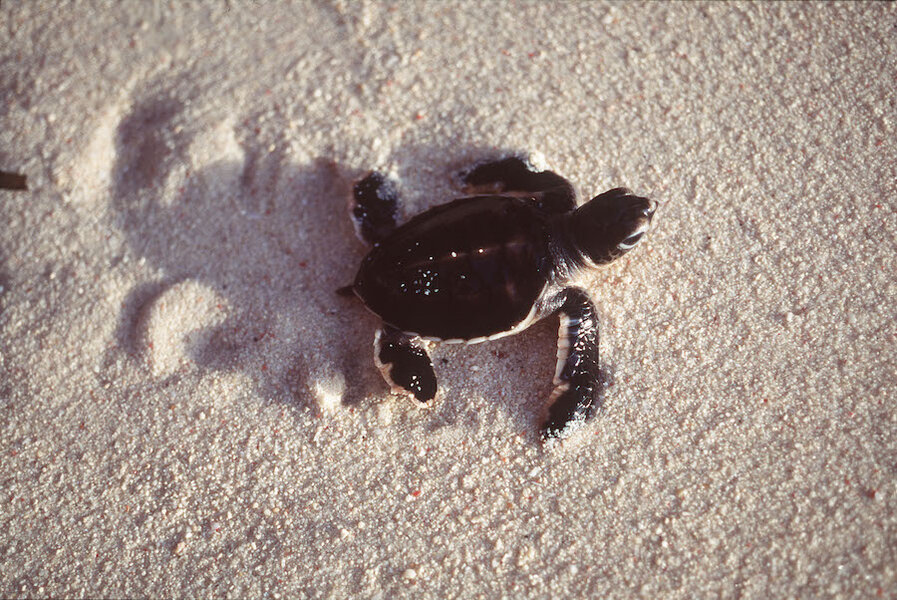Rare albino turtle hatchling found in Australia
Loading...
Volunteers surveying turtle nests in Australia made a surprising discovery when they noticed a baby green sea turtle that wasn't green.
Volunteers with Coolum and North Shore Coast Care were counting the empty turtle shells on Castaways Beach to estimate how many green sea turtles, also known as Pacific sea turtles, had hatched and made it to the ocean. The workers expected the nest to hatch on Friday, but when they arrived they found a small albino hatchling on its back.
"None of us had ever experienced or seen anything like that before, so we were all a little bit taken aback," volunteer group president Linda Warneminde told ABC News Australia.
Warneminde described the hatchling as looking normal, except with a white shell and small white flippers. A hue of slight pink could be seen under its flippers.
"He wasn't sick, he was just white," she told the BBC.
Albino turtles are extremely rare. Dr. Col Limpus, chief scientist of the Queensland's Government's Threatened Species Unit estimated to ABC News that albino hatchlings occur at a rate of “one in many hundreds of thousands of eggs.”
Despite the early triumph, the albino hatchling has a tough life ahead.
In general, green sea turtles have a survival to maturity rate of about one in 1,000 hatchlings, according to Werneminde. The animals have to overcome a range of hurdles from predators to plastic debris to fishing humans. And albino green turtles have an even lower rate of survival.
"Normally they don't survive coming out of the nest and when they do they're abnormal and not well suited to the environment, which means the chance of survival is very slim," Dr. Limpus told ABC.
The albino straggler appears to be off to a good start, despite the odds. Warneminde noted to CNN that the hatchling “was quite vigorous while walking from the nest to the ocean.”
The green sea turtle can weigh up to 700 pounds when fully grown, and have nonretractable, relatively small heads.
Green turtles have long migrations from feeding grounds to nesting areas. They mate every two to four years in shallow waters. When it is time to nest, the mother will leave the sea and dig a pit in the sand before laying her eggs. A typical nest is filled with 100 to 200 eggs.
“The most dangerous time of a green turtle’s life is when it makes the journey from nest to sea. Multiple predators, including crabs and flocks of gulls, voraciously prey on hatchlings during this short scamper,” National Geographic writes.
The albino hatchling found in Australia was one of 122 hatchlings. According to witnesses on the beach, despite obstacles and being two days behind the other hatchlings, it reached the sea.
"I just hope he survives out in the big sea. He was very fast, very keen to get in the water," Jayne Walton, a volunteer on the beach, told the BBC.








